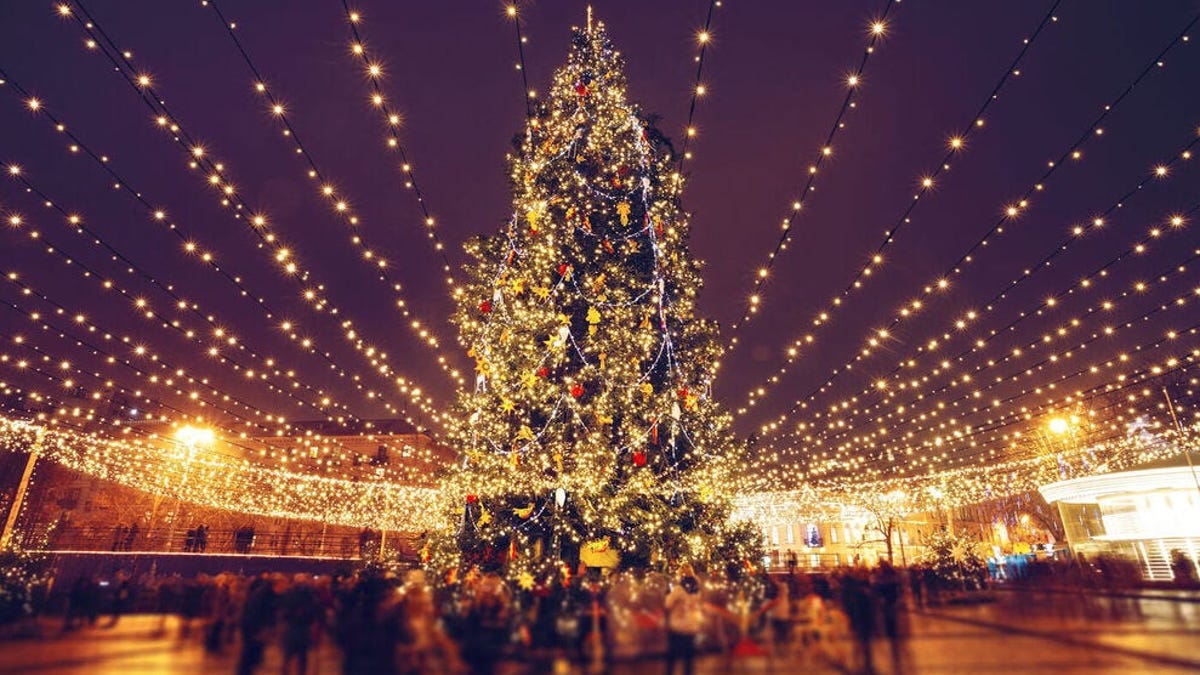How tech can help your holiday decorations
Light up your holiday decorations with ease using these tech tips.
ProblemSolved, USA TODAY
If you need a reason to economize as you plan a holiday light display that outshines the sun, consider these inconvenient truths:
Our holiday lights burn so bright, you can see them from space. Americans use more energy to power their holiday lights, by one estimate, than the nation of El Salvador uses for everything in a whole year. The juice that animates our 15-foot, inflatable blinking Rudolphs and our 20-foot, 1,200-bulb flagpole trees could cool 14 million refrigerators.
Many Americans – and some entire neighborhoods – are expending more energy than ever on their holiday yard displays: Staging them earlier, running them later and leaving no patch of turf unilluminated.
“People start decorating, like, right after Halloween now,” said Bianca Soriano, a spokesperson for Florida Power and Light. “If you start on November 1st, and let’s say you keep them on till New Year’s, that’s two months of extra energy.”
Want to know how much power those holiday lights use? There’s a formula for that
The average household spent an estimated $16.48 powering holiday lights in 2022, nearly two dollars more than in 2021, according to an analysis by the Today’s Homeowner website.
There are ways to predict those costs. Kiplinger, the personal finance site, offers a wonderfully geeky formula to calculate a holiday power bill:
[wattage/1000 x time in hours] x cost per kWh in cents = cost to run Christmas lights
For those who find formulas off-putting, Duke Energy provides a less math-intense alternative.
If you plan to string five strands of C9, two-inch incandescent lights, 500 bulbs in all, and run them six hours a day, you will spend $63 in the holiday month, according to Duke’s calculator.
If you switch to energy-efficient LED bulbs, the same month-long display will cost only $9. And if you downsize to Mini-LED bulbs, the ones shaped like tiny candles, your cost drops to 60 cents.
A 2008 study from the Department of Energy found that seasonal lights, alone, consumed 6.6 billion kilowatt hours of electricity in 2007.
That’s more energy than the nation of El Salvador used in a year at the time, according to a report by Todd Moss, executive director of the Energy for Growth Hub, an energy-equity think tank. His 2015 piece went viral. Backlash followed.
“People on the Left said, ‘You should stop wasting all that electricity,’ and people on the Right said, ‘You’re trying to kill Christmas,’” Moss said.
Moss notes that the 6.6 billion kilowatt figure “has probably gone down since then, because lighting’s gotten a lot more efficient.” But he also notes a distinct escalation in the holiday light wars, at least in his neighborhood outside the District of Columbia.
“People go all out, really cover their whole house,” he said.
Want to cut power costs for your holiday lights? Go LED
The big takeaway here, if you’re looking to save power while still staging a Clark Griswold-sized holiday spectacle, is to go LED.
LED bulbs use at least 75% less energy and last up to 25 times longer than old-school incandescent lights, according to the Department of Energy.
To illustrate the difference, ComEd calculated how much Clark Griswold himself might have saved with LED lights.
You may recall that the Griswold patriarch of National Lampoon’s Christmas Vacation set out to stage the brightest house on the block, armed with 25,000 Italian twinkle lights.
With incandescent bulbs burning five hours a day for a month, ComEd calculates, that display would cost the Griswolds $7,462 in today’s dollars.
With LED lights, the price comes down to $1,612, still a surprisingly large sum.
But that’s the movies.
“I don’t know anyone who’s putting up 25,000 lights,” said James Gherardi, spokesperson for Exelon, parent company of ComEd.
Here are more energy-saving tips, which you use beyond the holidays to save money. Try some of them inside and outside your home.
Don’t be in such a hurry to put up your holiday display
Soriano, of FPL, has noticed that her South Florida neighbors seem to deck the halls ever earlier in recent years.
Two months of holiday lights cost more than one month. You may even annoy your more holiday-averse neighbors by rolling out the lights in November. Why not wait a while?
Consider solar power
Solar-powered holiday lights might cost a bit more (roughly $40 for this four-pack on Amazon), but they can save you electrical costs in the long run.
Also, as Popular Mechanics reports, solar can spare you the hassle of running wires to outlets. Here are the magazine’s top solar picks.
Put your holiday lights on a timer
Time them to go on at sunset and off at bedtime. No one will notice them at noon. No one will be around to see them at 3 in the morning.
Rethink that inflatable Santa
Inflatables abound in millennial holiday displays, but they come with a price.
“Inflatables use a lot of energy,” Soriano said. “You hear that fan running.”
Your standard eight-foot inflatable costs 4 cents per hour or about a dollar a day in electricity, if it’s running 24-7, according to Landmark Creations, maker of custom inflatables.
“If you’ve got five – you’ve got Santa, a reindeer, a Grinch – every one of those is going to add to your electricity use,” Soriano said.
Beware of phantom power
Holiday decorations with electronic components can use energy even when they appear to be off, a quotient of wasted power that our Energy Department terms a “phantom load.”
For large and complex displays, consider using a “smart” power strip, which shuts off the power completely when you hit the switch.
This is the worst day, worst airport: What to know for a smooth holiday flight
Turn the lights off if you leave town
This tip raises a philosophical question: Is your holiday light display for you, or your neighbors?
Turning everything off when you fly to Tulum on Christmas Eve is “kind of a bummer,” Gherardi said, “because you want to see your house in its holiday form the entire month of December.”
But turning off the lights is certainly safer than leaving them on when you are away. And if you want to save a few bucks on power, this is a great way to do it.
Set a New Year’s resolution to take the lights down
The weekend after New Year’s Day makes a fine time to roll up your lights and deflate your elves.
Think about it: Is anything sadder than a wilted yard Santa in February?

Jessica Roberts is a seasoned business writer who deciphers the intricacies of the corporate world. With a focus on finance and entrepreneurship, she provides readers with valuable insights into market trends, startup innovations, and economic developments.






